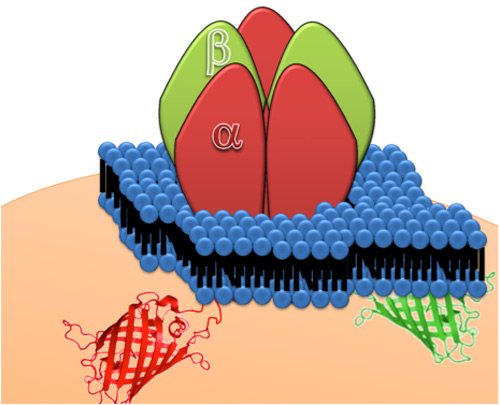With the discovery of photoactivatable fluorescent proteins and the development of super-resolution microscopy, scientists would seem to have everything they need to commence single-molecule counting. Scientists, however, are aware that single-molecule counting is limited by a key uncertainty: photoactivation efficiency. Unless a scientist knows the percentage of fluorescent proteins that actually become bright (and detectable) when exposed to laser light, under- or over-counting remains a possibility, and relating the number of counted fluorescent proteins to actual protein stoichiometry becomes difficult.
Now, as a result of a study carried out at the Institute of Photonic Sciences (ICFO), it may be possible for scientists to determine protein stoichiometry with confidence. An ICFO research group led by Nest Fellow Melike Lakadamyali, Ph.D., was able to quantify the photoactivation efficiency of all the known “irreversibly photoswitching fluorescent proteins” and establish a proper detailed reference framework for determining protein stoichiometry.
The researchers used a nanotemplate of known stoichiometry (the human glycine receptor expressed in Xenopus oocytes) and stepwise photobleaching or single-molecule counting photoactivated localization microcopy (PALM) to determine the photoactivation efficiency of fluorescent proteins mEos2, mEos3.1, mEos3.2, Dendra2, mClavGR2, mMaple, PA-GFP, and PA-mCherry. The researchers published the details of their work January 5 in Nature Methods, in an article entitled “Single molecule evaluation of fluorescent protein photoactivation efficiency using an in vivo nanotemplate.”
By measuring the photoactivation efficiency as well as other photophysical factors such as blinking, the researchers determined which proteins are best suited for molecular counting and found that none are perfect (most fluorescent proteins fail to photoactivate about 50% of the time). Therefore, they emphasized the importance of taking into account the photoactivation efficiency to correctly interpret the quantitative information.
“At the moment we have to work with imperfect fluorescent proteins and take into account the limitations when quantifying protein stoichiometry,” explained Dr. Lakadamyali. “However, now that there is a robust way to characterize photoactivation efficiency, future fluorescent protein engineering work will likely focus on optimizing this parameter for generating fluorescent proteins better suited for molecular counting using super-resolution.”
In their article, the authors indicate that when the stoichiometry is unknown but conserved, it should, in principle, be possible to distinguish among monomeric, dimeric, and trimeric stoichiometry using fluorescent proteins. “Although we focus here on single-molecule counting, photoactivation efficiency has other important implications,” the authors continued. “For example, a percentage of the labeled structure (for example, the human glycine receptor) is completely undetected. Finally, photoactivation efficiency also affects quantification of protein colocalization in multicolor experiments.”



